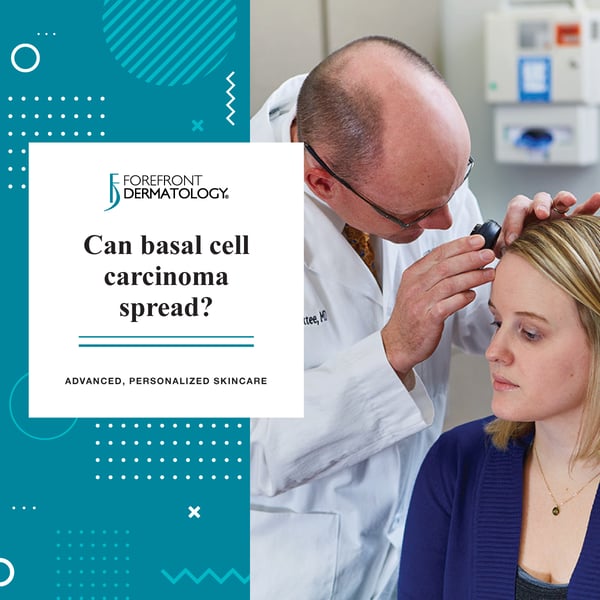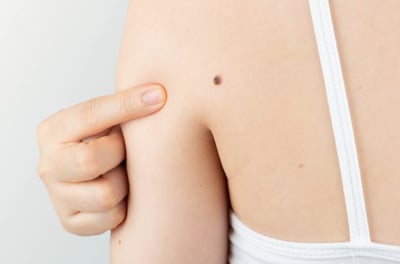
Skin cancer is by far the most common type of cancer and each year there are more new cases of skin cancer than the combined cases of breast, prostate, lung and colon cancer. This translates to one in five Americans developing skin cancer over their lifetime. Of all skin cancer types, basal cell carcinoma is the most common type. According to the American Cancer Society, about 5.4 million basal and squamous cell skin cancers are diagnosed each year in America and basal cell carcinoma accounts for 80% of these cases.
We asked Dr. Rhett Kent, board-certified dermatologist and internal medicine physician with Forefront Dermatology, three of the most common questions surrounding basal cell carcinoma.
What does basal cell carcinoma look like?
“Basal cell carcinomas are classically described as slowly growing, pearly papules. This reflects their smooth, shiny appearance.” noted Dr. Kent. “Although they are usually skin colored or pink, there are pigmented forms. Dilated blood vessels, ulceration, and a scar-like appearance are other clues to the diagnosis. Patients may find it difficult to distinguish these from benign skin growths. However, any new, growing and/or changing skin lesion is always concerning for skin cancer. When any of these features are present, it is important to bring them to the attention of your dermatologist urgently to avoid delays in diagnosis and treatment.”
Where does basal cell carcinoma occur?
“Basal cell carcinoma can develop anywhere on the body however risk is strongly linked to ultraviolet light exposure. Thus, sun exposed areas are at highest risk.” stated Dr. Kent. “When performing self-examinations for skin cancer, it’s important not to forget places you might not see very well on your own, like your ears, back, the bottoms of your feet and posterior legs.”
Can basal cell carcinoma spread?
“Basal cell carcinomas rarely spread (metastasize) to other parts of the body,” added Dr. Kent. “Instead, they invade into and slowly destroy surrounding tissues. This is especially concerning when basal cell carcinomas grow near the eyes, ears, nose, mouth, bone, or brain, as invasion can have serious and life altering consequences. Regardless, it is always best to get an annual skin cancer screening to detect basal cell carcinomas as early as possible and prevent them from spreading at all.”
Be Proactive
Remember, early detection saves lives and a simple, yearly in-office skin screening with your local board-certified Forefront Dermatologist can truly mean the difference between life and death. Find a dermatologist near you today.





